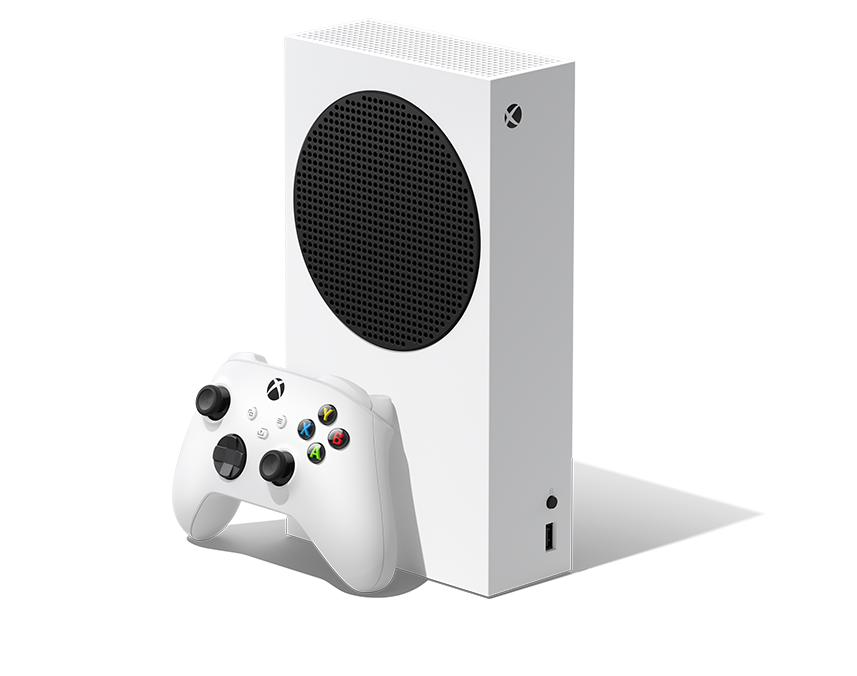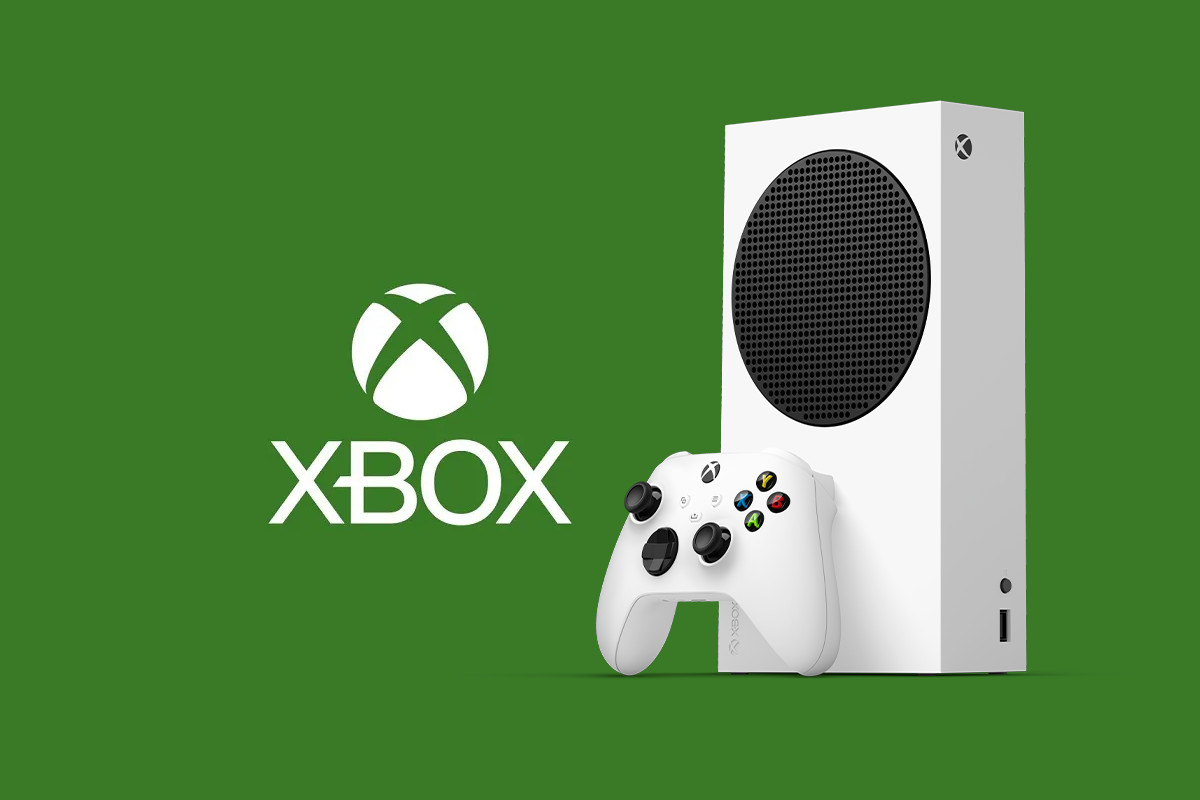A Pricier, Yet Still Affordable Entry Point
The compact Series S saw its first U.S. price jump in five years this May—up to $379.99 for the 512 GB model and around $429.99 for the 1 TB Carbon Black variant. Europe felt a similar €50–£50 bump. While the hike narrows the gap with the Series X, Series S is still the lowest-cost pathway into current-gen Xbox gaming and Game Pass—important as the hobby gets more expensive across the board.
Retailers are already using aggressive bundle discounts (extra controllers, three-month Game Pass cards) to soften the blow ahead of Prime Day.

Easier Repairs and Longer Lifespan
Microsoft’s January deal with uBreakiFix means more than 700 U.S. storefronts can now handle out-of-warranty repairs—drift-y gamepads, overheating fans, even SSD swaps—for both Series S capacities. Turnaround averages three days, with genuine parts and official diagnostics. That move aligns with Microsoft’s broader right-to-repair push and gives buyers extra confidence in a fully digital box that can’t simply be replaced by popping in a disc if the SSD fails.
New System Features & ‘Copilot for Gaming’
A June system update added three big quality-of-life tweaks:
- Copilot for Gaming (preview): an on-console chatbot that surfaces quick-action settings (“lower HDR brightness”), Game Pass recommendations, or controller-mapping tips without opening a separate app.
- Aggregated Library: finally merges owned-and-installed, Game Pass, EA Play, and cloud titles into one filterable hub instead of scattering them across tabs.
- MRU Customization: lets you hide seldom-used system apps from the Home’s “Recently Used” row—handy on the smaller SSD.
Performance mode defaults were also relaxed for developers using Unity 6, letting them hit 60 FPS more consistently by shifting dynamic-resolution thresholds.
Performance Reality vs. Perception
Benchmarks from recent PC-to-console ports (Helldivers 2, Manor Lords) suggest the little box can still punch above its 4 TFLOP paper spec. Thanks to CPU parity with Series X and new FSR 3 upscaling, many titles now target 1440p/60 FPS with only modest settings tweaks. Analysts comparing dev kits report the Series S delivers roughly 1.8 × the GPU throughput of Nintendo’s forthcoming Switch 2, reinforcing Microsoft’s claim that every first-party game—even the next Forza Motorsport update—will continue shipping day-and-date on Series S.
Game Pass Gets Pricier Too
Console hardware isn’t the only thing inflating: Game Pass Core’s annual fee just climbed from $59.99 to $74.99, PC Game Pass to $11.99/month, and Ultimate to $19.99/month. Code strings unearthed by dataminers hint at another tiered restructure (a cheaper, cloud-only plan and a $25 “all-access” tier) later this year. If you’re committed to the service, stacking 12-month cards before another bump remains the best hedge.
Studio Turbulence—but Commitments Hold
Microsoft’s spring layoffs shuttered several prototypes (Everwild, Perfect Dark) and trimmed roughly 9,000 jobs across Activision-Blizzard-King and Bethesda. Phil Spencer’s team insists every game shown at the June showcase is still on track, and internal guidance reportedly mandates all first-party titles be fully optimized for Series S through this generation. That reassurance matters: Baldur’s Gate 3 patched in split-screen on Series S only after months of engineering help from Xbox’s Advanced Tech Group, showing Microsoft will step in when parity is threatened.
Buying Advice Going into Prime Day
- Watch for Bundles: Early Prime Day listings pair the 512 GB console with three months of Game Pass Ultimate for under $349, effectively offsetting the recent price hike.
- Budget for Storage: Even casual players fill 512 GB fast; Western Digital’s 1 TB expansion card routinely drops below $129.
- Repair Confidence: With uBreakiFix in the mix and replacement parts easier to source, a refurb Series S isn’t the gamble it was in 2023.
Bottom Line
Yes, both the console and its signature subscription cost more in 2025. Even so, the Series S remains the easiest gateway to 60 FPS, current-gen Xbox gaming—now with better repair options, smarter system software, and a roadmap that (for now) still includes every major first-party release. If you’re focused on value and a 4K disc drive isn’t a must, the pint-sized Series S is still the strongest dollar-for-frame play in the Xbox ecosystem.
Xbox Series S Console 1TB vs Xbox Series X Specs
If you’re in the market for a new Xbox console, you might be wondering about the differences between the Xbox Series X and the newer 1TB Xbox Series S. Microsoft offers these two options at different price points, with distinct features to match various gaming needs. The Xbox Series X remains the more powerful console with a faster GPU, more memory, and native 4K gaming capabilities, while the Xbox Series S 1TB model offers more storage than the original 512GB version but still lacks a disc drive.
The console differences go beyond just storage space. The Series X includes a disc drive for physical games and Blu-ray movies, whereas the Series S is digital-only, requiring all games to be downloaded or streamed. Design-wise, the Series S is smaller and lighter, making it more portable and easier to fit in entertainment centers, while the Series X has a larger, more substantial build to accommodate its premium components.
Here’s a comparison table of the Xbox Series S 1TB and Xbox Series X specifications:
| Feature | Xbox Series S (1TB Model) | Xbox Series X |
| Price (MSRP) | ~$349.99 – $379.99 (for 1TB Carbon Black/Robot White) | ~$499.99 – $599.99 (for 1TB Disc Drive/All-Digital) |
| CPU | 8x Cores @ 3.6 GHz (3.4 GHz w/ SMT) Custom Zen 2 CPU | 8x Cores @ 3.8 GHz (3.6 GHz w/ SMT) Custom Zen 2 CPU |
| GPU | 4 TFLOPS, 20 CUs @ 1.565 GHz Custom RDNA 2 GPU | 12 TFLOPS, 52 CUs @ 1.825 GHz Custom RDNA 2 GPU |
| Memory | 10 GB GDDR6 (8GB @ 224 GB/s, 2GB @ 56 GB/s) | 16 GB GDDR6 (10GB @ 560 GB/s, 6GB @ 336 GB/s) |
| Internal Storage | 1 TB Custom NVMe SSD (All-Digital) | 1 TB Custom NVMe SSD (Disc Drive/All-Digital options), 2 TB (Galaxy Black Special Edition) |
| Optical Drive | No (All-digital console) | 4K UHD Blu-Ray Drive (Disc Drive models) |
| Gaming Resolution | 1440p (upscaled to 4K) | True 4K (supports 8K output) |
| Performance Target | Up to 120 FPS | Up to 120 FPS |
| HDMI Features | Auto Low Latency Mode, HDMI Variable Refresh Rate, AMD FreeSync | Auto Low Latency Mode, HDMI Variable Refresh Rate, AMD FreeSync |
| Dimensions | 6.5 cm x 15.1 cm x 27.5 cm (2.6″ x 5.9″ x 10.8″) | 15.1 cm x 15.1 cm x 30.1 cm (5.9″ x 5.9″ x 11.9″) |
| Weight | 1.93 kg (4.25 lbs) | 4.4 kg (9.8 lbs) |
| Backward Compatibility | Thousands of Xbox One, Xbox 360, and Original Xbox games | Thousands of Xbox One, Xbox 360, and Original Xbox games |
| Key Differentiator | Smaller, more affordable, digital-only, targets 1440p gaming | More powerful, includes disc drive (most models), targets native 4K gaming |
Key Takeaways
- The Xbox Series X offers superior performance with native 4K gaming, a disc drive, and 1TB storage compared to the digital-only Series S.
- The Xbox Series S 1TB model doubles the storage capacity of the original Series S while maintaining the smaller form factor and lower price point.
- Both consoles provide next-generation gaming experiences with quick load times, but differ in resolution capabilities and physical media support.
Comparing Specifications and Performance
The Xbox Series X and Xbox Series S 1TB offer different performance levels through their hardware configurations. These differences impact gaming experiences in resolution, speed, and storage capacity.
CPU, GPU, and RAM
Both Xbox Series consoles use the same custom AMD Zen 2 CPU with eight cores, but their GPU capabilities differ significantly. The Series X features a more powerful AMD RDNA 2 GPU delivering 12 teraflops of processing power, while the Series S provides 4 teraflops. This threefold difference affects graphical performance and rendering capabilities.
The memory configurations also vary substantially. Xbox Series X comes with 16GB of GDDR6 RAM, with approximately 13.5GB available for games. The Series S includes 10GB of the same GDDR6 RAM, with about 8GB dedicated to games.
Both consoles use the same system-on-chip (SoC) architecture, but the Series X’s more robust implementation allows it to handle more demanding graphical workloads.
Resolution and Framerate
Resolution is perhaps the most noticeable difference between these consoles. The Xbox Series X targets true 4K gaming (3840×2160 pixels), while the Series S aims at 1440p resolution (2560×1440 pixels), though it can upscale to 4K on compatible displays.
Framerate capabilities are more similar, with both consoles supporting 60 fps gaming on most titles. Many games also offer 120 fps modes on both systems, though the Series X can maintain higher resolutions while reaching these framerates.
The Series X consistently delivers better visual fidelity with higher-resolution textures, improved lighting effects, and greater draw distances in games that take advantage of its additional power.
Storage Solutions and Capacity
Both consoles use custom NVME SSD technology for fast loading times, but with different capacities. The Xbox Series S now offers a 1TB option (up from its original 512GB), while the Series X comes with 1TB standard, with a 2TB option available in some regions.
Usable storage space is lower than advertised capacity due to system files. The 1TB drives provide approximately 802GB of usable space on both consoles.
Storage expansion options are identical, with both supporting the Seagate Storage Expansion Card. However, the Series S lacks a disc drive, meaning all games must be downloaded digitally, potentially making storage management more challenging despite the new 1TB option.
Design, Features, and Gaming Experience
Xbox Series X and Series S consoles offer different designs and capabilities that affect how gamers experience their favorite titles. While both deliver next-generation performance, they target different types of players with varying priorities regarding visuals, storage, and physical media.
Console Design and User Interface
The Xbox Series X and Series S have distinctly different physical designs. The Series X features a tower-like structure with a black finish, standing 11.8 inches tall when vertical. In contrast, the Series S is much smaller and lighter with a white finish and a distinctive black ventilation circle on top.
Both consoles share the same user interface and dashboard experience. The UI is clean and responsive, allowing quick access to games, apps, and settings. Microsoft designed both systems to be easy to navigate with minimal loading times between screens.
The Series X includes a 4K UHD Blu-ray disc drive for physical games and movies, while the Series S is digital-only. This difference is crucial for gamers who collect physical games or use their console as a media center.
Exclusive Games and Backward Compatibility
Both Xbox consoles access the same game library, including exclusive titles like Halo Infinite, Forza Horizon 5, and Microsoft Flight Simulator. There are no Series X-only exclusives that can’t be played on Series S.
Both systems offer impressive backward compatibility with thousands of games from Xbox One, Xbox 360, and original Xbox libraries. Many older titles receive automatic enhancements when played on the new consoles, including faster loading times and more stable frame rates.
Xbox Game Pass serves as a major selling point for both consoles. This subscription service gives players access to hundreds of games, including day-one releases of all Microsoft first-party titles. Game Pass Ultimate adds cloud gaming capabilities, allowing subscribers to play select titles on mobile devices.
Enhanced Gaming Technologies
The Series X targets 4K gaming at 60-120fps, while the Series S aims for 1440p resolution at similar frame rates. Both consoles support many of the same gaming technologies, though the Series X typically delivers better visual quality and performance.
Both systems feature AMD RDNA 2 GPU architecture, though the Series X offers 12 teraflops of processing power compared to the Series S’s 4 teraflops. This difference affects how games handle complex visual effects and higher resolutions.
Both consoles support Dolby Vision for gaming and Dolby Atmos for immersive audio. Ray tracing technology is available on both systems, creating realistic lighting, shadows, and reflections. However, the Series X handles these demanding features more efficiently due to its additional processing power.
Controllers are identical between both systems, featuring improved ergonomics, textured triggers, and a dedicated share button for capturing gameplay moments.
Frequently Asked Questions
Xbox consoles offer different gaming experiences based on their technical specifications, performance capabilities, and price points. The following questions address common inquiries about the Xbox Series S and Xbox Series X consoles.
What are the technical specifications of the Xbox Series X compared to the Xbox Series S?
The Xbox Series X features significantly more powerful hardware than the Series S. It has a GPU capable of 12 teraflops of processing power compared to the Series S’s 4 teraflops.
The Series X includes a more powerful CPU, 16GB of GDDR6 RAM versus 10GB in the Series S, and targets 4K resolution gaming. The Series S aims for 1440p resolution gaming, making it less powerful but still capable for next-generation games.
Is there a performance difference between the Xbox Series S 1TB and the Xbox Series X?
Yes, there is a noticeable performance difference between these consoles. The Xbox Series X delivers superior visual fidelity, especially on 4K displays where images appear crisper and more detailed.
While both consoles can run the same games, the Series X generally achieves higher frame rates and resolution. The 1TB Series S has identical performance to the standard 512GB Series S model, with the only difference being storage capacity.
How does the Xbox Series X’s storage capacity compare to that of the Xbox Series S?
The Xbox Series X comes with either 1TB or 2TB of custom NVMe SSD storage depending on the model. The Xbox Series S now offers either 512GB or 1TB storage options.
This difference is significant because modern games require substantial storage space. Both consoles support storage expansion through proprietary expansion cards, allowing players to increase their available space.
What is the release date for the Xbox Series S?
The original Xbox Series S with 512GB storage launched alongside the Xbox Series X on November 10, 2020. The newer 1TB version of the Xbox Series S was released more recently as an upgraded storage option.
Microsoft continues to support both consoles with the same games and system updates, ensuring compatibility across the Xbox ecosystem.
How can consumers differentiate between an Xbox Series X and an Xbox Series S console?
The most obvious physical difference is that the Xbox Series X is larger and black, resembling a vertical tower. The Xbox Series S is smaller, white, and features a distinctive black circular vent on its top surface.
The Series X includes a disc drive, while the Series S is digital-only with no disc drive. This visual and functional distinction makes it easy to identify which console is which.
What are the key differences in gaming experience between Xbox Series S and Xbox Series X?
The primary gaming experience difference comes down to resolution and visual quality. The Series X delivers true 4K gaming at higher frame rates, while the Series S typically runs games at 1080p or 1440p resolution.
Loading times are similar on both consoles thanks to their SSD technology. The Series X may provide more consistent performance in demanding games with less frame rate drops or visual compromises.
Many gamers report that while the Series X looks noticeably better on a 4K TV, the Series S still delivers an excellent experience, especially for casual gamers or those with 1080p displays.







